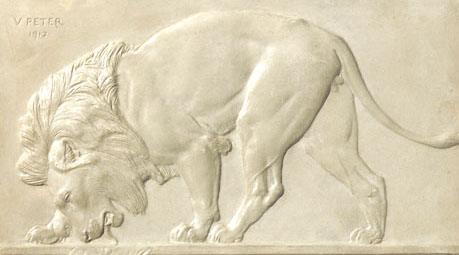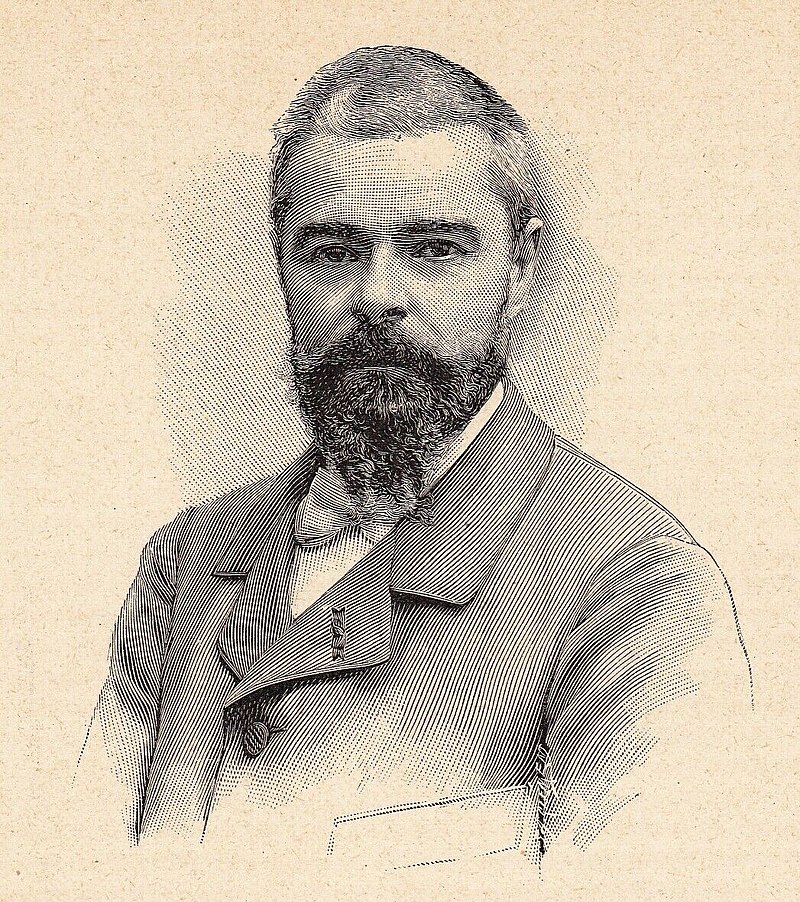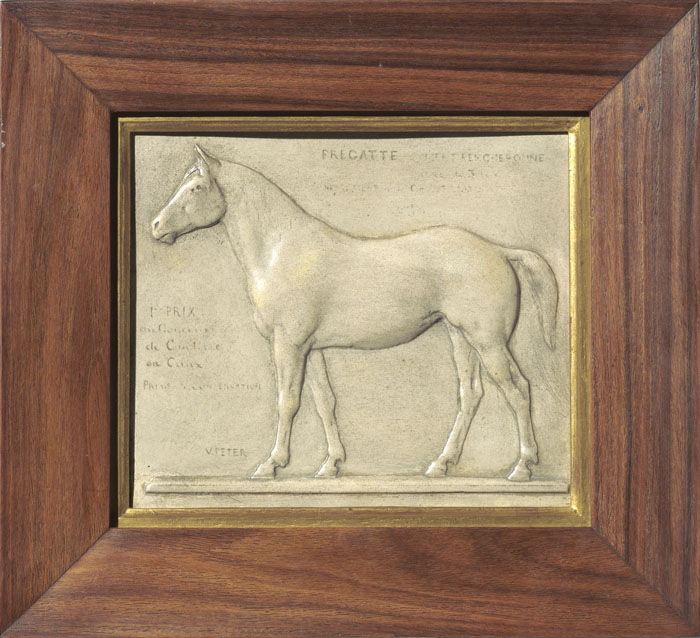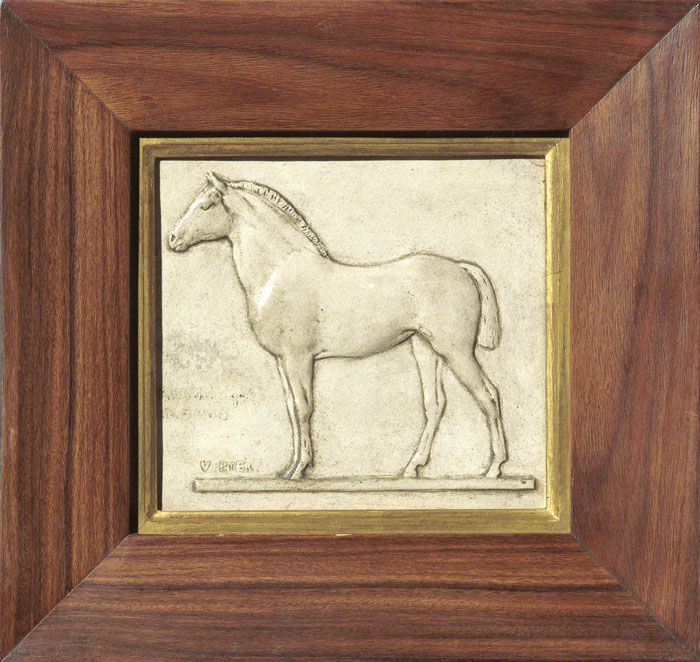He depicted several dogs, horses, bulls, with meticulous precision. Nothing was left out, tufts of hair, lengths of limbs; all was taken from a specific model. Therefore, he was truly an animal portraitist; one can easily observe in his works his extreme adroitness, almost virtuosity. Each and every one of his animal portraits is masterpiece, if one uses the term in its old meaning: “of faultless execution”.
Peter was best known for his small portrait medals and reliefs depicting animal subjects. He was also much in demand as a finisher of other sculptor’s marbles, including those of Rodin. He had a particular affection for animals, keeping a bear and a young lion in his studio.
The commissions he received came mostly from sculptors, and in 1901 he became professor of sculpture at the École des Beaux-Arts in Paris.
Born in Paris on 20 December 1840, Peter was taught by Vital-Cornu and Devaulx and was a prolific and accomplished sculptor, painter and medallist. He began exhibiting busts and medallions at the Salon in 1868 and showed Animalier bronzes and bas-reliefs from 1873 onwards. Peter was then honoured with several first and second class medals at the Exposition of 1889 and 1900 respectively, and was awarded the Legion d’Honneur in 1900. Examples of his sculptures may be seen in the museums at Caen and Angers, and his output included over one hundred plaques, medallions and bronzes. Key pieces in the artist’s oeuvre are his works such as The Lion of Zanzibar and The Two Friends which were exhibited at the Beaux-Arts in 1891 and the Exposition Universelle of 1900. Other subjects he sculpted include bears, sheep, goats and rabbits.
Victor Peter was considered one of the greatest direct carvers of the period. He was asked by Rodin to carve his most important marble sculptures, Christ and Mary Magdalene (1908).





